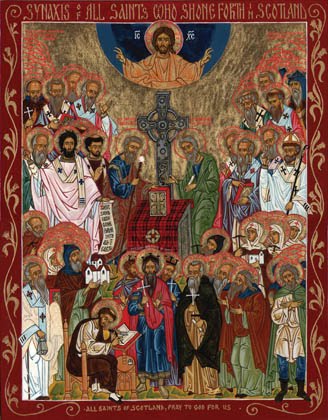
The Priory & St Mary's Church, Lindisfarne, Northumberland Background Information (courtesy of English Heritage) Lindisfarne Priory on Holy Island was one of the most important centres of early Christianity in Anglo-Saxon England. It is still a place of pilgrimage today, the dramatic approach across the causeway adding to the fascination of the site. St Aidan founded the monastery in AD 635, but St Cuthbert, Prior of Lindisfarne, is the most celebrated of the priory's holy men. After many missionary journeys, and ten years as a hermit on lonely Farne Island, he reluctantly became Bishop before retiring to die on Farne in 687. Buried in the priory, his remains were transferred to a pilgrim shrine there after eleven years, and found still undecayed - a sure sign of sanctity. From the end of the 8th century, the isolated island with its rich monastery was easy prey for Viking raiders. In 875 the monks left, carrying Cuthbert's remains, which after long wanderings were enshrined in Durham Cathedral in 1104, where they still rest. Only after that time did Durham monks re-establish a priory on Lindisfarne. The evocative ruins of the richly decorated priory church they built in c. 1150 still stand, with their famous 'rainbow arch' - a vault-rib of the now-vanished crossing tower. The small community lived quietly on Holy Island until the suppression of the monastery in 1537. This fascinating museum offers a clear and dynamic interpretation of the story of St Cuthbert and the 1,300 year history of Lindisfarne Priory.
http://www.flickr.com/photos/30248153@N06/3957427979/

No comments:
Post a Comment